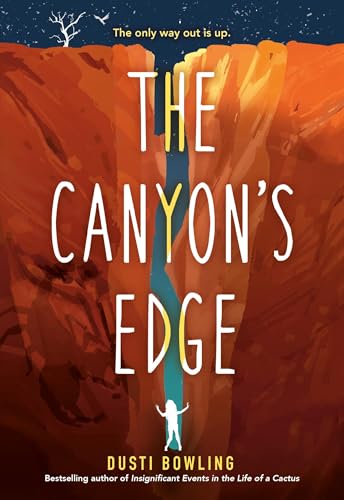Trapped at the bottom of a canyon, a girl must face her deepest fears to find her way back to the father she can’t bear to lose.
Dusti Bowling’s “The Canyon’s Edge” is a gripping middle-grade novel in verse that blends survival drama with emotional depth. The story follows Nora, a girl grappling with PTSD after witnessing her mother’s death in a random shooting. On the anniversary of the tragedy, Nora and her father attempt to heal by hiking a remote Arizona canyon. When a sudden flash flood sweeps her father away, Nora must confront the harsh desert alone, battling dehydration, venomous creatures, and her own spiraling fears. The novel has a unique structure: beginning and ending in prose, with the heart of the story told through visceral, shape-shifting verse. Recognized for its powerful storytelling, the book earned a Notable Children’s Books in the Language Arts Award (2021) and was named a Notable Poetry and Verse Novel (2021).
The Canyon’s Edge is a compelling choice for educators teaching SDG 13: Climate Action, as it underscores the unpredictability of natural disasters like flash floods (events increasingly linked to climate instability). Nora’s struggle to navigate the canyon’s dangers invites discussions about resilience in the face of environmental crises and human adaptation to extreme conditions. Nora shines as a Risk-taker with her relentless determination and courage in adversity.
Teachers might pair this book with science units on weather patterns or desert ecosystems, encouraging students to research climate-related hazards and to take action by creating and communicating preparedness plans. The verse format also offers a creative entry point for writing exercises, asking students to mirror Nora’s introspective voice or to craft poems about overcoming personal “canyons.” Small-group discussions could explore how grief and fear intersect with bravery, making this a versatile tool for fostering empathy and critical thinking.

